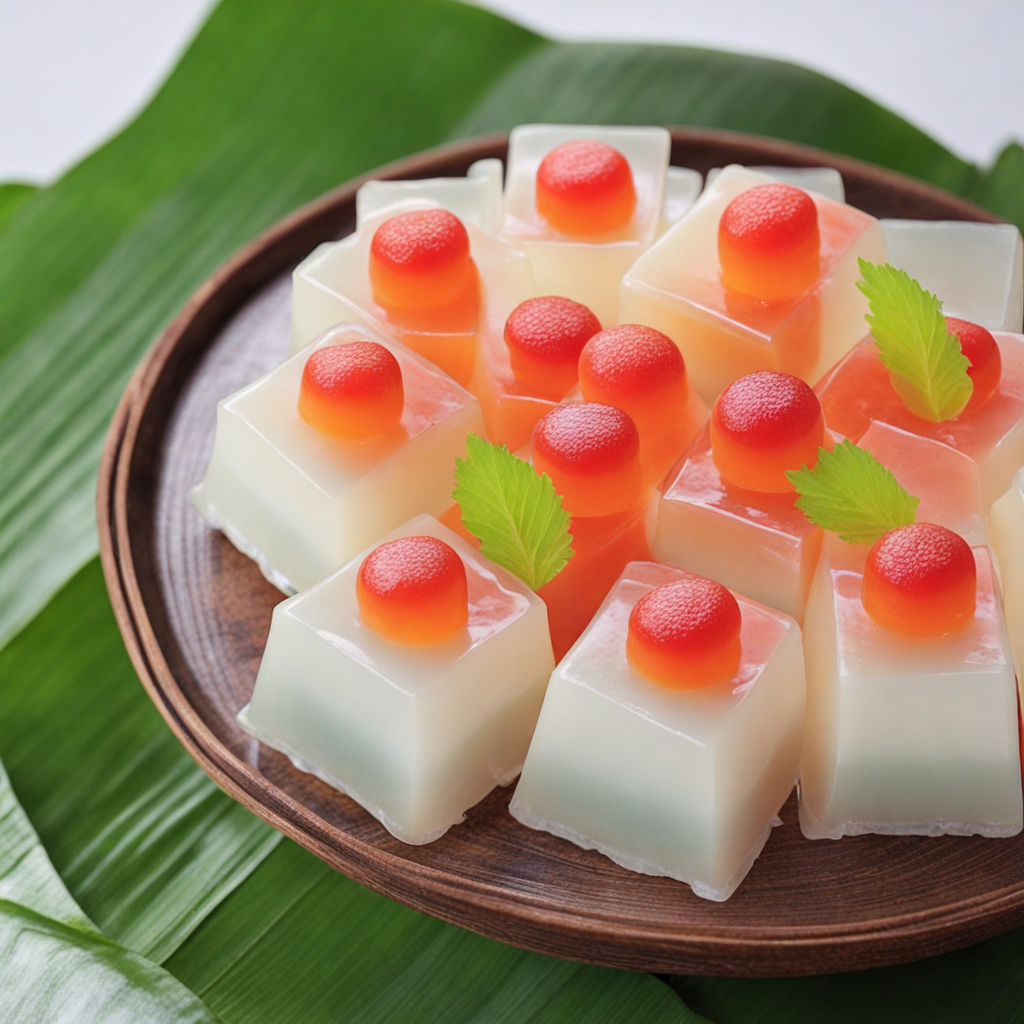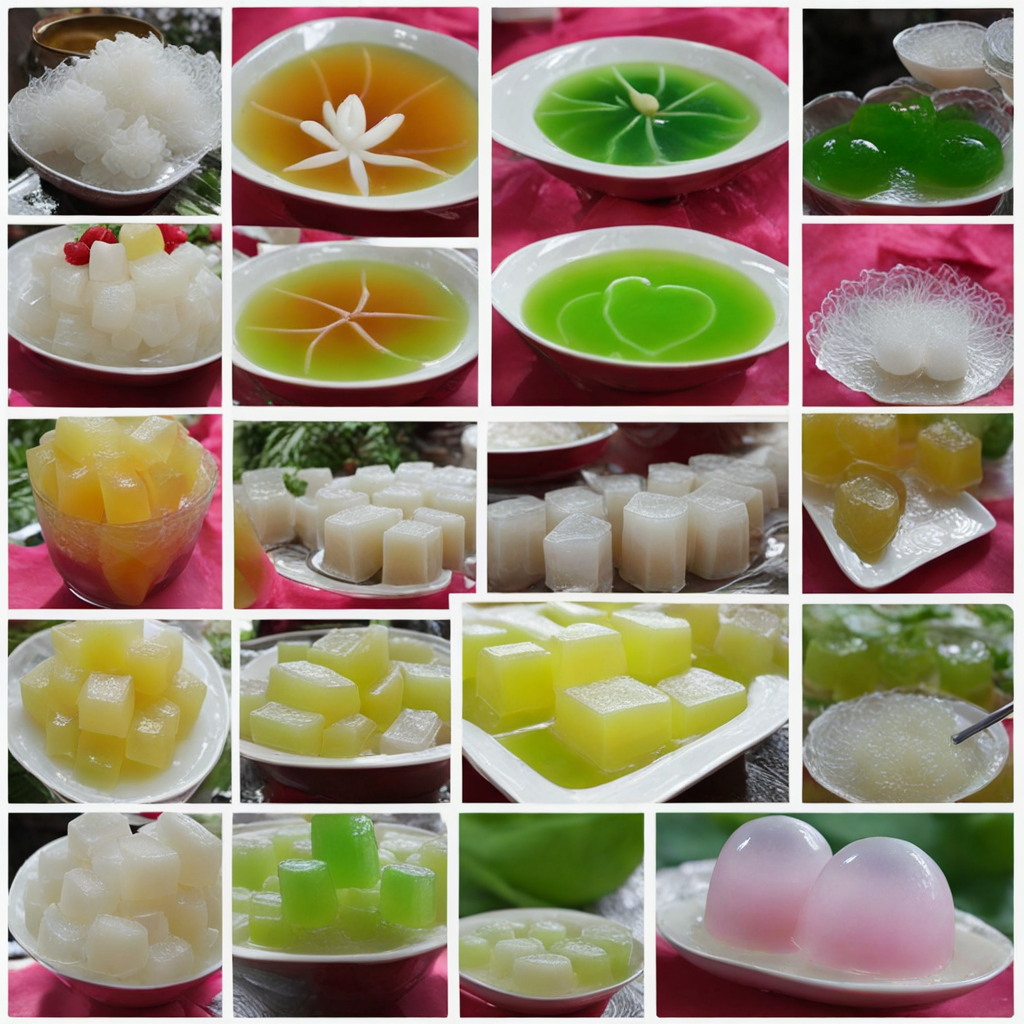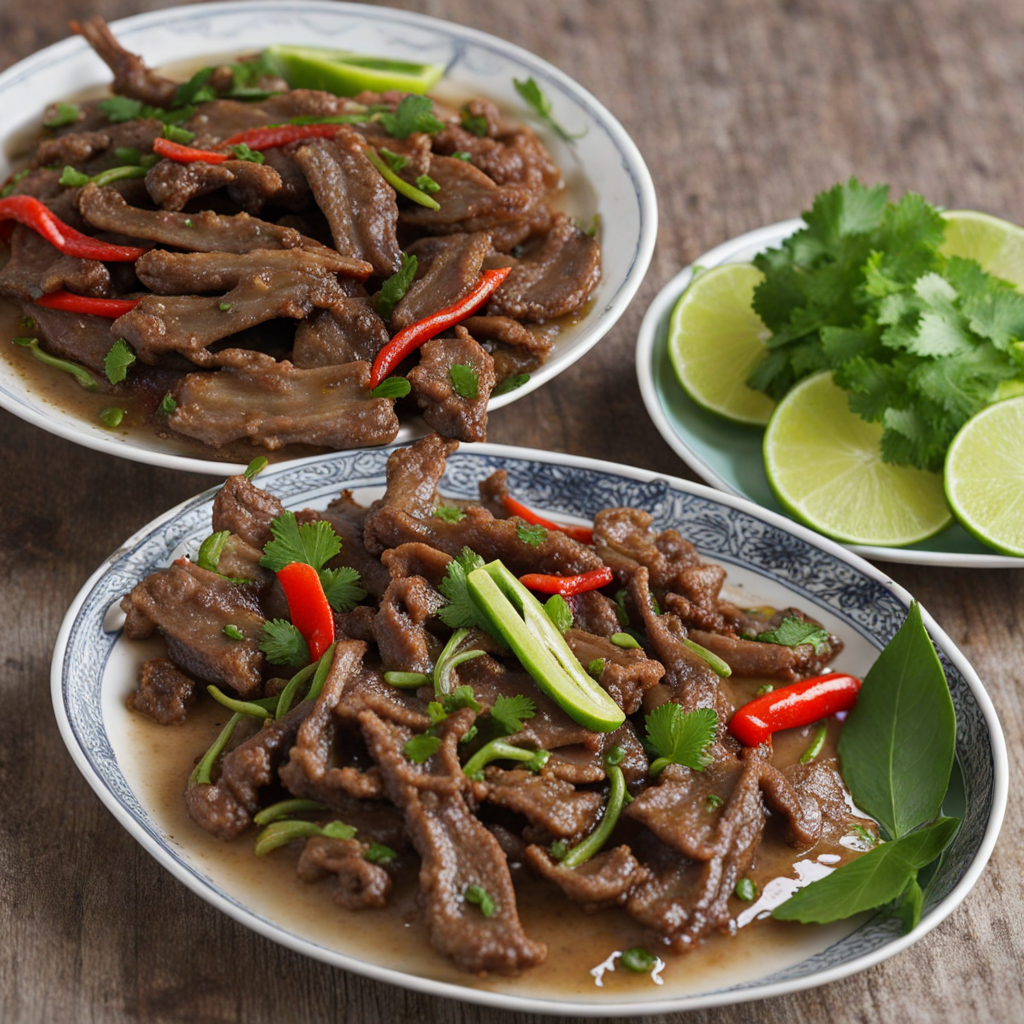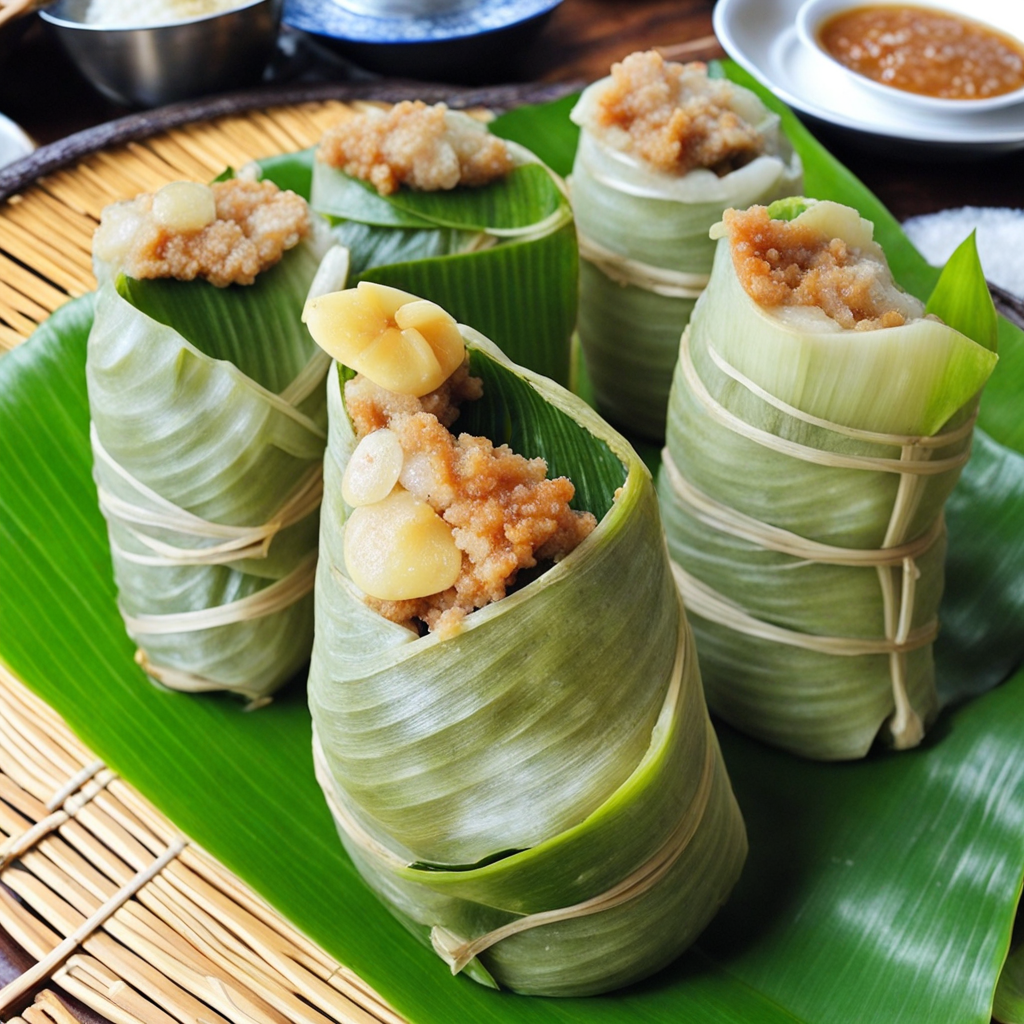Cha Houy Teuk
Cha Houy Teuk is a delightful Cambodian dessert that offers a unique combination of flavors and textures, making it a must-try for anyone looking to explore the rich culinary heritage of Cambodia. This treat is primarily made from a mixture of rice flour and mung bean flour, which gives it a chewy and slightly sticky consistency. The dessert is often molded into small cups, providing a charming presentation that enhances the overall experience. The soft, gelatinous texture is complemented by the subtle sweetness from palm sugar, creating a harmonious balance that makes each bite a delightful surprise. One of the standout features of Cha Houy Teuk is its vibrant colors, which are achieved using natural food coloring derived from ingredients like pandan leaves or butterfly pea flowers. The visually appealing layers not only make the dessert attractive but also add a hint of flavor that complements the sweetness of the palm sugar. As you bite into the layers, you’ll experience a gentle burst of flavors that reflect the use of fresh, local ingredients, a hallmark of Cambodian cuisine. Each layer is distinct yet works seamlessly together, showcasing the skill and creativity of Cambodian dessert makers. Often accompanied by a drizzle of coconut milk, Cha Houy Teuk becomes even more indulgent. The rich creaminess of the coconut milk contrasts beautifully with the chewy base, adding an extra depth of flavor while enhancing the overall dessert experience. This combination of textures and flavors makes Cha Houy Teuk not just a dessert, but a celebration of Cambodian culture and culinary artistry. Whether enjoyed at a local market or made at home, this dessert is sure to leave a lasting impression on your palate and invite you to dive deeper into the world of Cambodian gastronomy.
How It Became This Dish
The History and Cultural Significance of "ឆាហួយទឹក" (Chahoy Teuk) in Cambodia Origins "ឆាហួយទឹក" (Chahoy Teuk), a beloved dish in Cambodian cuisine, exemplifies the rich tapestry of flavors and traditions that characterize the country’s culinary heritage. This dish, which translates to "fish sauce salad," showcases the simplicity and depth of Cambodian cooking, utilizing fresh ingredients and vibrant flavors that reflect the natural bounty of the region. The origins of Chahoy Teuk can be traced back to the ancient Khmer civilization, which thrived from the 9th to the 15th centuries. The Khmer people had a profound understanding of local ingredients, particularly fish, which was abundant in the rivers and lakes that crisscrossed the landscape. Fish sauce, known locally as "teuk trei," has been an essential component of Cambodian cooking for centuries. It is made from fermented fish and salt, providing a savory umami flavor that enhances the taste of various dishes. The practice of using fish sauce in salads likely emerged as a practical solution for preserving fish and enhancing its flavor. As agricultural practices advanced and trade routes expanded, the Khmer people began to incorporate a wider variety of vegetables and herbs into their diets. This melding of flavors and textures led to the creation of dishes like Chahoy Teuk, which is not only delicious but also nutritious. Cultural Significance Chahoy Teuk holds a significant place in Cambodian culture, serving as more than just a meal; it is a symbol of community and tradition. The dish is often featured at family gatherings, festivals, and celebrations, where it is enjoyed alongside other traditional foods. It embodies the principles of "sangkran," or sharing, which is an essential aspect of Cambodian culture. The act of preparing and sharing food strengthens familial ties and fosters a sense of belonging within the community. The ingredients used in Chahoy Teuk also reflect the agricultural practices and seasonal cycles of Cambodia. Fresh vegetables such as cucumbers, carrots, and herbs like mint and cilantro are often included, emphasizing the importance of local produce. This seasonal approach to cooking not only promotes sustainability but also highlights the connection between the land and the plate. In addition to its communal aspect, Chahoy Teuk also serves as a reminder of Cambodia's resilience and adaptability. The dish has survived through times of hardship, including the Khmer Rouge regime, which devastated the country's population and cultural heritage in the late 1970s. Despite these challenges, traditional recipes and practices have been passed down through generations, preserving the essence of Cambodian identity. Development Over Time Over the years, Chahoy Teuk has evolved, mirroring the broader changes in Cambodian society and cuisine. In the past, the dish was often prepared in a more straightforward manner, using whatever fresh ingredients were available. As Cambodia has opened up to globalization and tourism, the culinary landscape has diversified, leading to new interpretations and variations of traditional dishes. Modern versions of Chahoy Teuk may incorporate additional ingredients such as grilled meats, seafood, or even fruits, reflecting the influence of neighboring countries and contemporary culinary trends. Chefs and home cooks alike are experimenting with flavors and presentation, creating visually stunning dishes that appeal to a global audience. While the essence of Chahoy Teuk remains rooted in its traditional preparation, the dish has also embraced innovation. Fusion cuisines, which blend elements from different culinary traditions, have gained popularity in urban centers and among younger generations. This has resulted in creative takes on Chahoy Teuk, where ingredients like avocado, mango, or even quinoa are introduced, offering a new twist on the classic recipe. Despite these modern adaptations, the core values of Chahoy Teuk—freshness, simplicity, and communal sharing—remain unchanged. The dish continues to evoke nostalgia and pride among Cambodians, serving as a connection to their heritage and a celebration of their culinary identity. Ingredients and Preparation The traditional preparation of Chahoy Teuk involves a few key ingredients that come together to create a harmonious blend of flavors. The base usually includes fresh vegetables such as julienned cucumbers, carrots, and bean sprouts, which add crunch and texture. Herbs like mint, basil, and cilantro are essential for adding vibrant flavors and aromas. The star of the dish, of course, is the fish sauce, which can be mixed with lime juice, garlic, and chili to create a tangy and spicy dressing. This combination elevates the freshness of the vegetables, creating a refreshing salad that is perfect for warm weather. In some variations, proteins such as grilled shrimp or sliced chicken are added to enhance the dish's heartiness. The preparation of Chahoy Teuk is often a communal activity, where family members come together to wash, chop, and mix the ingredients. This collaborative approach to cooking reinforces the idea of sharing and community, making the dish not just a meal, but an experience. Conclusion Chahoy Teuk is more than just a salad; it is a culinary narrative that speaks to the heart of Cambodian culture and history. Rooted in ancient traditions and shaped by the resilience of its people, this dish embodies the spirit of community, celebration, and adaptability. As Cambodia continues to evolve and embrace new influences, Chahoy Teuk remains a cherished symbol of its rich culinary heritage. Whether enjoyed at a family gathering or in a modern restaurant, Chahoy Teuk serves as a reminder of the importance of fresh ingredients, communal sharing, and the joy of food—a timeless celebration of Cambodian identity. As both locals and visitors savor this delightful dish, they partake in a shared experience that transcends generations, connecting the past with the present and paving the way for the future of Cambodian cuisine.
You may like
Discover local flavors from Cambodia







